HEALTH & SAFETY PROGRAMS
Abrasive Blasting
Policy/Program information: To educate employees about the dangers of abrasive blasting and to outline basic safe work practices for controlling these dangers. It also establishes training standards and PPE requirements for employees involved in abrasive blasting activity.
Required if: Company employees use compressed air or water to direct a high-velocity stream of an abrasive material to clean an object or surface, remove burrs, apply a texture, or prepare a surface for the application of paint or other types of coatings.
Legislation:
29 CFR 1915.34(c)(2)
29 CFR 1915.34(c)(1)(ii) and (iii)
29 CFR 1915.34(c)(1)(iv)
29 CFR 1915.34(c)(3)(i) through (v) (29 CFR 1910.94(a)(3)(i)
29 CFR 1910.94(a)(7)
29 CFR 1915.88(h)
29 CFR 1915.88(e)(1) and (e)(3)
Compliant with: OSHA | ISNetworld® RAVS | Veriforce® | Avetta® | Complyworks® | Rig Up®
Price: $200
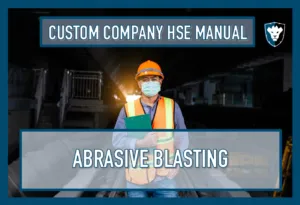
Aerial Lifts
Policy/Program information: This program has been developed to educate and reduce the risk of physical injury or property damage in areas where aerial lifts are in operation. It also establishes compliance with federal, state, and local law. Departments using aerial lifts must ensure that supervisors and operators comply with all aspects of this safety program. All employees must successfully complete a training program, and receive certification prior to the operation of any aerial lift. Contractors operating aerial lifts on university projects are expected to meet or exceed the requirements found in this program, and comply with all applicable statues and regulations governing the use of powered industrial trucks
Required if: Training is an essential part of any successful safety program. For aerial lifts, OSHA does not provide the specific training requirements necessary for operators. However, the American National Standard Institute (ANSI) does provide the needed training requirements for aerial lifts
Legislation: Several OSHA regulations and ANSI standards apply to aerial lifts and include provisions for design, operator training, and safe operating practices, these include:
29 CFR 1910.67 (Vehicle Mounted Elevating and Rotating Work Platforms)
29 CFR 1926.453 (Aerial Lifts)
29 CFR 1926.451 & .452 (Scaffolds)
29 CFR 1926.20 (General Safety and Health Provisions)
29 CFR 1926.21 (Safety Training and Education) – Section 5 of the OSHA Act, commonly referred to as the “General Duty Clause.” –
American National Standards Institute (ANSI),
ANSI, A92.3: Manually Propelled Elevating Aerial Platforms
ANSI, A92.6: Self-Propelled Elevating Work Platforms
ANSI, A92.2: Vehicle Mounted Elevating and Rotating Aerial Devices
ANSI, A92.5: Boom-Supported Elevating Work Platforms
Compliant with: OSHA | ISNetworld® RAVS | Veriforce® | Avetta® | Complyworks® | Browz® | Rig Up®
Price: $200
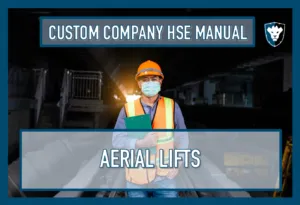
Asbestos Awareness
Policy/Program information: If your workers are exposed to asbestos as a part of their job scope, OSHA requires a company asbestos training program for employees who might be exposed to fiber levels that are either anticipated or measured at/above permissible exposure limits.
Required if: Employees are in situations that could expose them to fiber levels (either measured or anticipated) at or above the permissible exposure limit (0.1 fibers per cubic centimeter (f/cc) as an 8-hour, time-weighted average (TWA) and/or the excursion limit (1.0 f/cc as a 30-minute TWA).
Legislation:
Part Number:1910 Subpart Z Toxic and Hazardous Substances, 1910.1001
Compliant with: OSHA | ISNetworld® RAVS | Veriforce® | Avetta® | Complyworks® | Browz® | Rig Up®
Price: $200
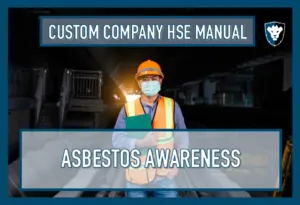
Assured Equipment Grounding
Conductor Program
Policy/Program information:
Required if: Employees use temporary power supplies, or receptacles for power supply in construction.
Legislation: 29 CFR 1926.2, (29 CFR 1910.304(b)(3)), (29 CFR 1926.404(b)(1))
Compliant with: OSHA | ISNetworld® RAVS | Veriforce® | Avetta® | Complyworks® | Browz® | Rig Up®
Price: $200
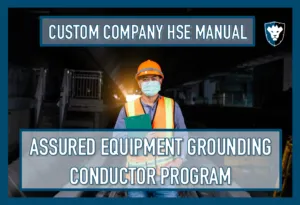
Benzene Awareness
Policy/Program information: This program covers policy related to Benzene hazards in the workplace. Benzene is a very serious health hazard. The intent of this program is to provide employees with general knowledge and guidelines enabling employees to anticipate, recognize, evaluate, and better participate in controlling their exposure to Benzene found in certain industrial worksite soils and / or due to spills or release incidents occurring within petrochemical refining, drilling and processing facilities in which they may work.
Required if: Factors and Sites Favorable for Benzene Exposure:
● Disturbed Soils within Hydrocarbon Processing Facilities – Disturbed soil within hydrocarbon processing facilities where hydrocarbons or Benzenes may have been spilled or which have long periods of exposure to low level Benzene.
● Vessels or Tanks – Confined spaces with Benzene residue.
● Spills, Pipe or Equipment Failure – Containment or process equipment failures resulting in Benzene gas being released into the atmosphere. Factors and Sites LESS Favorable for the Benzene Exposure
● Open, Un-congested Hydrocarbon Process Areas with Good Ventilation or Air Movement and Properly Working Containment – Open Areas where little undisturbed soil exists.
Legislation: 29 CFR 1910.1028
Compliant with: OSHA | ISNetworld® RAVS | Veriforce® | Avetta® | Complyworks® | Browz® | Rig Up®
Price: $200
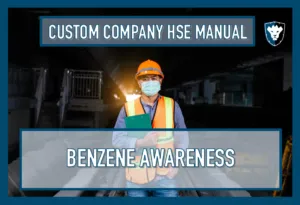
Bloodborne Pathogens
Policy/Program information: To establish that employees are provided training on bloodborne pathogens. To explain exposure control plan and give guidelines for minimizing occupational exposure to bodily fluids.
Required if: As part of the Department of Labor, OSHA promotes worker safety and health in every workplace in the United States. OSHA’S bloodborne pathogens standard protects employees who work in occupations where they are at risk of exposure to blood or other potentially infectious materials
Legislation: 1910.1030 (a) (1) through (i) (4)
Compliant with: OSHA | ISNetworld® RAVS | Veriforce® | Avetta® | Complyworks® | Browz® | Rig Up®
Price: $200
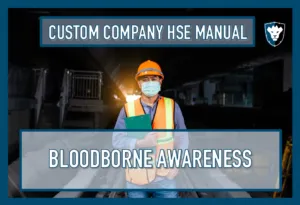
Cold Weather Safety/Cold Stress
Policy/Program information: Employers have a duty to protect workers from recognized hazards, including cold stress hazards, that are causing or likely to cause death or serious physical harm in the workplace.This program covers requirement for training and communication to employees including:How to recognize the environmental and workplace conditions that can lead to cold stress.The symptoms of cold stress, how to prevent cold stress, and what to do to help those who are affected.How to select proper clothing for cold, wet, and windy conditions.
Employers should:
Monitor workers physical condition.Schedule frequent short breaks in warm dry areas, to allow the body to warm up.Schedule work during the warmest part of the day.Use the buddy system (work in pairs).Provide warm, sweet beverages. Avoid drinks with alcohol.Provide engineering controls such as radiant heaters.
Required if: Environmental cold can affect any worker exposed to cold air temperatures and puts workers at risk of cold stress. As wind speed increases, it causes the cold air temperature to feel even colder, increasing the risk of cold stress to exposed workers, especially those working outdoors, such as recreational workers, snow cleanup crews, construction workers, police officers and firefighters. Other workers who may be affected by exposure to environmental cold conditions include those in transit, baggage handlers, water transportation, landscaping services, and support activities for oil and gas operations.Risk factors for cold stress include:Wetness/dampness, dressing improperly, and exhaustionPredisposing health conditions such as hypertension, hypothyroidism, and diabetesPoor physical conditioning
Legislation: Although OSHA does not have a specific standard that covers working in cold environments, under the Occupational Safety and Health Act (OSH Act) of 1970, employers have a duty to protect workers from recognized hazards, including cold stress hazards, that are causing or likely to cause death or serious physical harm in the workplace.
Compliant with: OSHA | ISNetworld® RAVS | Veriforce® | Avetta® | Complyworks® | Browz® | Rig Up®
Price: $200
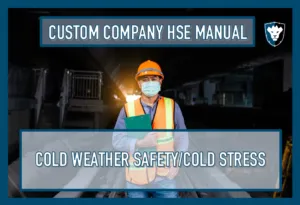
Compressed Air
Policy/Program information: Compressed air is an energy source, used throughout industry for various purposes. As an energy source it must be treated with the same respect as electricity, if it is not used correctly it can be fatal. Compressed air may be stored in cylinders and air receivers or generated by compressors. Air under pressure is delivered via a regulator, air-line and air hoses to air tools and equipment. The tool or equipment is driven by the energy contained in the compressed air.
Required if: Every employee shall be instructed in the rules and regulations which concern his safety or the safety of others. Employers should provide training and not allow employees to use compressed air for cleaning themselves or their clothing in general industry situations. The eyes and other body parts, such as the respiratory system, may be damaged as the result of inadequate personal protective equipment, lack of chip guards, and/or uncontrolled release of compressed air.
Legislation: 29 CFR 1926.803 & 29 CFR 1910.242(b)
Compliant with: OSHA | ISNetworld® RAVS | Veriforce® | Avetta® | Complyworks® | Browz® | Rig Up®
Price: $200
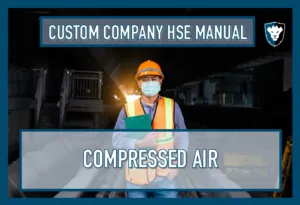
Compressed Gas Safety
Policy/Program information: The purpose of this safety policy and procedure is to establish guidelines for the protection and safety of employees who handle and use compressed gases. Compressed gases are typically stored under pressure in metal cylinders. These cylinders are designed and constructed to withstand high pressures. Improper handling and use of compressed gases can result in devastating consequences. This safety policy and procedure provides guidelines for the safe handling and use of compressed gases. It includes provisions for training and presents safe handling guidelines. It also presents the types, uses, inspection, and marking requirements of compressed gas cylinders. Additionally, this safety policy and procedure presents transportation and storage requirements for compressed gas cylinders.
Required if: Employees are working in & around Compressed Gases that can cause serious accidents as a result from the misuse, abuse, or mishandling of compressed gas cylinders. Also required if employees assigned to the handling of cylinders under pressure are not following general safe handling guidelines.Serious accidents can result from the misuse, abuse, or mishandling of compressed gas cylinders. Employees assigned to the handling of cylinders under pressure should follow general safe handling guidelines. Compressed gas cylinders are used for a variety of gases in your company.
These gas cylinders fall into the following categories:
● Flammable
● Toxic and Poison
● Liquid
Legislation: 1910.101
Compliant with: OSHA | ISNetworld® RAVS | Veriforce® | Avetta® | Complyworks® | Browz® | Rig Up®
Price: $200
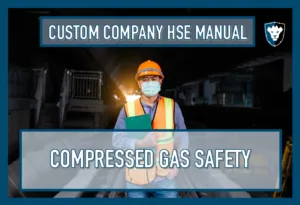
Confined Space Entry Program
Policy/Program information: Entry into confined spaces can pose atmospheric and physical hazards which can be life threatening. This policy establishes procedures designed to ensure the safety of all persons/employees entering confined spaces on any location or property and comply with regulations established by OSHA.
Required if: Employees or contractors enter into a confined space. A confined space is any space meeting the following specifications:
1.Large enough for an employee to bodily enter and perform work.
2.Has limited or restricted means of entry or exit.
3.Has the potential for oxygen deficient or hazardous atmosphere.
4.Contains other recognized physical hazards such as engulfment or entrapment.
5.Not intended for continuous human occupancy. Examples include: silos, vaults, pits, tanks, sewers, ducts, pipelines and compartments. And, also to describe procedures for entering confined spaces and permit required confined spaces which will comply with applicable regulations and provide for the safety of all entrants.
Legislation: 1910.146 (A-F)
Compliant with: OSHA | ISNetworld® RAVS | Veriforce® | Avetta® | Complyworks® | Browz® | Rig Up®
Price: $200
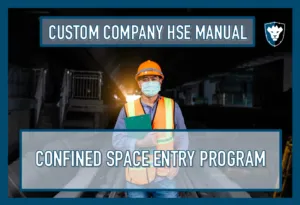
COVID-19 Operations / Safety
Policy/Program information: Measures for protecting workers from exposure to, and infection with, SARS-CoV-2, the virus that causes Coronavirus Disease 2019 (COVID-19), depend on the type of work being performed and exposure risk, including potential for interaction with people with suspected or confirmed COVID-19 and contamination of the work environment. Employers should adapt infection control strategies based on a thorough hazard assessment, using appropriate combinations of engineering and administrative controls, safe work practices, and personal protective equipment (PPE) to prevent worker exposures. Some OSHA standards that apply to preventing occupational exposure to SARS-CoV-2 also require employers to train workers on elements of infection prevention, including PPE.
Required if: All workers, regardless of specific exposure risks could become infected or whomever may already be infected when entering the workplace.
Legislation: https://www.osha.gov/Publications/OSHA3990.pdfhttps://www.cdc.gov/coronavirus/2019-ncov
Compliant with: OSHA | ISNetworld® RAVS | Veriforce® | Avetta® | Complyworks® | Browz® | Rig Up®
Price: $200
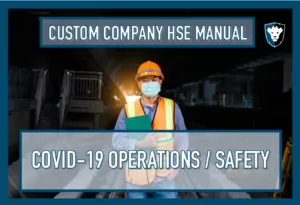
Cranes
Policy/Program information: To educate all employees involved with crane activities shall comply with the specific manufacturer’s specifications and limitations as well as this policy and the requirements set forth
Required if: Cranes, hoists, and rigging devices are used for lifting and moving materials. Having policies to maintain a safe workplace for its employees; therefore, it cannot be overemphasized that only qualified and licensed individuals shall operate these devices. All organizations are required to comply with the provisions of this policy and procedure. Prior to any work crane operators shall identify any hazards listed in this policy and fill out appropriate planning forms when needed.
Legislation: ANSI B-30.5 and OSHA 1926.1400 Sub Part CC Cranes and Derricks in Construction regulations. https://www.osha.gov/laws-regs/regulations/standardnumber/1926/1926SubpartCC
Compliant with: OSHA | ISNetworld® RAVS | Veriforce® | Avetta® | Complyworks® | Browz® | Rig Up®
Price: $200
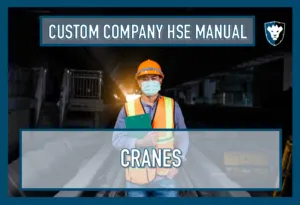
Driver Safety & Motor Vehicle
Policy
Policy/Program information: Employees will be trained in a variety of situations which will be included with informal training, such as covering a safety topic at the beginning of a shift, or formal, in-classroom training also to reduce vehicle incident and at-fault work related road collision costs and injuries by [determine an achievable figure and add it here] over three years by promoting a safe driving culture within the organisation.
Required if: Drivers of company vehicles
Legislation: https://www.transportation.gov/policy/transportation-policy/safety
Compliant with: OSHA | ISNetworld® RAVS | Veriforce® | Avetta® | Complyworks® | Browz® | Rig Up®
Price: $200
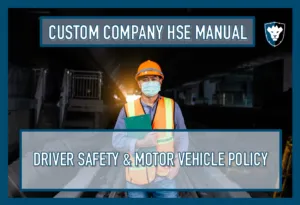
Electrical Safety Awareness
Policy/Program information: Ensure that the company provides each employee with an understanding of electrical hazards in the workplace.
Required if: Required before the commencement of work or within one year of initial hire; every two years thereafter
Legislation: OSHA 29 CFR 1910.332
Compliant with: OSHA | ISNetworld® RAVS | Veriforce® | Avetta® | Complyworks® | Browz® | Rig Up®
Price: $200
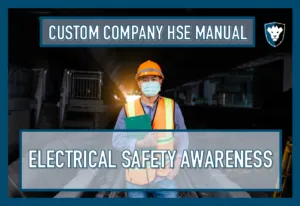
Emergency Response / Action Plans
Policy/Program information: The primary focus of the Emergency Response standard would be to protect workers who respond to emergencies as part of their regularly assigned duties. Examples include: fire brigades/workplace emergency response teams, industrial and municipal firefighters, technical rescuers, emergency medical service providers, etc. A secondary focus of the rule would be to protect those workers who may be called upon, from time to time, to respond to emergencies. Examples include: skilled support workers such as heavy equipment and crane operators, heavy wrecker/rotator operators, etc
Required if: Almost every business is required to have an emergency action plan (EAP). If fire extinguishers are required or provided in your workplace, and if anyone will be evacuating during a fire or other emergency
Legislation: 29 CFR 1910.157
Compliant with: OSHA | ISNetworld® RAVS | Veriforce® | Avetta® | Complyworks® | Browz® | Rig Up®
Price: $200
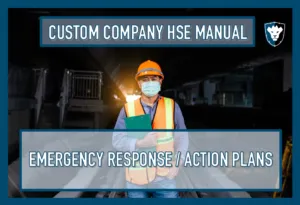
Fall Protection
Policy/Program information: Falls are among the most common causes of serious work related injuries and deaths. Employers must set up the work place to prevent employees from falling off of overhead platforms, elevated work stations or into holes in the floor and walls. The purpose is to ensure that employees who work at elevated heights and are subjected to the associated hazards are properly trained; give training coordinators a company endorsed reference for creating internal training courses or outsourcing instruction.
Required if: Employers must set up the work place to prevent employees from falling off of overhead platforms, elevated work stations or into holes in the floor and walls. OSHA requires that fall protection be provided at elevations of four feet in general industry workplaces, five feet in shipyards, six feet in the construction industry and eight feet in longshoring operations. In addition, OSHA requires that fall protection be provided when working over dangerous equipment and machinery, regardless of the fall distance.
Legislation: : OSHA 29CFR, Part 1926.500/503
Compliant with: OSHA | ISNetworld® RAVS | Veriforce® | Avetta® | Complyworks® | Browz® | Rig Up®
Price: $200
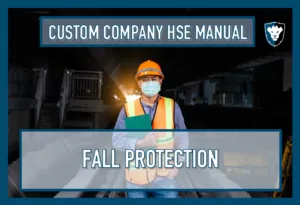
Fire Protection & Extinguishers
Policy/Program information: Ensure that employees are trained in fire prevention, evacuation, and suppression and have hands-on training on the use of a fire extinguisher for emergency use on their worksite. Training covers the following standards:
● Extinguisher types and parts
● Fire prevention and isolating fuels and ignition sources
● Characteristics of fuels
● Understanding emergency plans
● Fighting a fire/pass technique & fire approach
● Live fire exercise, including NGL and crude
Required if: Recommended within three months of initial hire or prior to fire watch; every year (alternating) thereafter
Legislation: OSHA 29CFR, Part: 1910.157; DOT 49CFR, Part: 195.403
Compliant with: OSHA | ISNetworld® RAVS | Veriforce® | Avetta® | Complyworks® | Browz® | Rig Up®
Price: $200
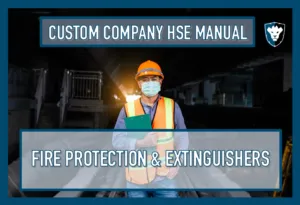
First Aid Policy
Policy/Program information: Ensure employees have the skills required to deal with life and non-life threatening situations at the workplace as well as at home; give training coordinators a company endorsed reference for creating internal training courses or outsourcing instruction.
Required if: Recommended within one year of initial hire; every three years thereafter
Legislation: OSHA 29CFR, Part: 1910.151
Compliant with: OSHA | ISNetworld® RAVS | Veriforce® | Avetta® | Complyworks® | Browz® | Rig Up®
Price: $200
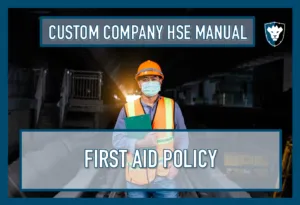
Forklift & Industrial Trucks
Policy/Program information: There are many types of powered industrial trucks. Each type presents different operating hazards. For example, a sit-down, counterbalanced high-lift rider truck is more likely than a motorized hand truck to be involved in a falling load accident because the sit-down rider truck can lift a load much higher than a hand truck. Workplace type and conditions are also factors in hazards commonly associated with powered industrial trucks. For example, retail establishments often face greater challenges than other worksites in maintaining pedestrian safety. Beyond that, many workers can also be injured when (1) lift trucks are inadvertently driven off loading docks; (2) lifts fall between docks and an unsecured trailer; (3) they are struck by a lift truck; or (4) they fall while on elevated pallets and tines.
Required if: Required before commencement of task or within one year of employment; every three years thereafter.
Legislation: OSHA 29CFR, Part: 1910.178
Compliant with: OSHA | ISNetworld® RAVS | Veriforce® | Avetta® | Complyworks® | Browz® | Rig Up®
Price: $200
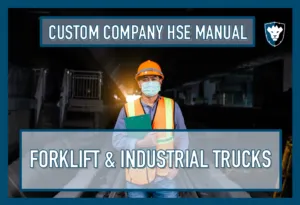
Gas Hazards
Policy/Program information: To train and develop employees on the understanding and awareness of hazardous gases. Hazardous gases are those gases that are sufficiently toxic and/or reactive to meet one of the definitions given below. They include acutely toxic, corrosive,flammable, dangerously reactive and oxidizing gases. Inert compressed gases such as nitrogen, argon, and carbon dioxide are not considered “Hazardous Gases” for the purpose of this SOP. For information about safe handling of all compressed gases, including inert.
Required if: Is needed if workers are engaged in many different industrial processes that are needed to successfully drill and service a well. These processes frequently require the use of specialized equipment and specialized work crews.
Legislation: https://www.osha.gov/oil-and-gas-extractionGeneral Industry (29 CFR 1910)Construction (29 CFR 1926)
Compliant with: OSHA | ISNetworld® RAVS | Veriforce® | Avetta® | Complyworks® | Browz® | Rig Up®
Price: $200
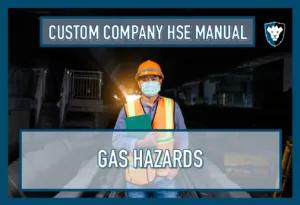
General Waste Management
Policy/Program information: · This training outlines guidelines for effective waste management during operations, the segregation of wastes, and opportunities for recycling. Employees will be trained on waste management rules and techniques. This will include proper handling, storage, and disposal of wastes and—depending on the type of waste—might also include general instruction on disposal of non-hazardous materials. If wastes generated are classified as hazardous, employees will be trained in disposal of hazardous materials as well. Employees will also be taught how to generally reduce waste, recycle, pick the right PPE, and record/document the process properly.
Required if: Handling, storage, and disposal of wastes
Legislation: EPA https://www.epa.gov/laws-regulations
Compliant with: OSHA | ISNetworld® RAVS | Veriforce® | Avetta® | Complyworks® | Browz® | Rig Up®
Price: $200
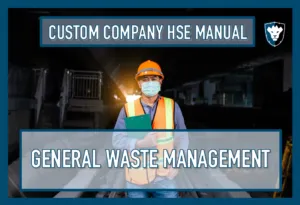
Hazard Communication
(HazCom) Program
Policy/Program information: To ensure that hazards of all chemicals produced or imported are evaluated and that information concerning their hazards is transmitted to employers and employees.
Required if: Required at the time of initial hire; every 2 years thereafter. Additional requirements whenever a new physical or health hazard is introduced and the employees have not been previously trained about the product.
Legislation: OSHA 29CFR, Part: 1910.1200
Compliant with: OSHA | ISNetworld® RAVS | Veriforce® | Avetta® | Complyworks® | Browz® | Rig Up®
Price: $200
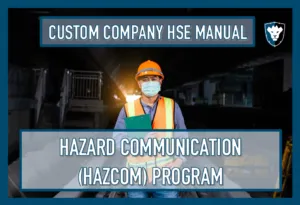
Hand & Power Tool Safety
Policy/Program information: Hand and power tools are a common part of our everyday lives and are present in nearly every industry. These tools help us to easily perform tasks that otherwise would be difficult or impossible. However, these simple tools can be hazardous and have the potential for causing severe injuries when used or maintained improperly. Special attention toward hand and power tool safety is necessary in order to reduce or eliminate these hazards.
Required if: The employer is responsible for the safe condition of tools and equipment used by employees. Employers shall not issue or permit the use of unsafe hand tools. Employees should be trained in the proper use and handling of tools and equipment.
Legislation: https://www.osha.gov/hand-power-tools/standardsGeneral Industry (29 CFR 1910)Maritime (29 CFR 1915, 1917, 1918)Construction Industry (29 CFR 1926)
Compliant with: OSHA | ISNetworld® RAVS | Veriforce® | Avetta® | Complyworks® | Browz® | Rig Up®
Price: $200

Heat Illness Prevention
Policy/Program information: Every year, dozens of workers die and thousands more become ill while working in extreme heat or humid conditions. There are a range of heat illnesses and they can affect anyone, regardless of age or physical condition. Under OSHA law, employers are responsible for providing workplaces free of known safety hazards. This includes protecting workers from extreme heat. An employer with workers exposed to high temperatures should establish a complete heat illness prevention program.Provide workers with water, rest and shade.Allow new or returning workers to gradually increase workloads and take more frequent breaks as they acclimatize, or build a tolerance for working in the heat.Plan for emergencies and train workers on prevention.Monitor workers for signs of illness.
Required if: Heat-related illness can affect workers in many industries, at indoor or outdoor worksites. Some job-related risk factors include:Outdoor work in warm weather,Heat sources such as ovens, fires, or hot tar,Strenuous physical activity, andHeavy or non-breathable work clothes.When these (or other) heat hazards are present, employers should plan ahead to protect workers.
Legislation:
Compliant with: OSHA | ISNetworld® RAVS | Veriforce® | Avetta® | Complyworks® | Browz® | Rig Up®
Price: $200

Hydrogen Sulfide (H2S)
Policy/Program information: Ensure that employees who may be subjected to the hazards of H2S at the workplace are properly trained; give training coordinators a company endorsed reference for creating internal training courses or outsourcing instruction.
Required if: Recommended within 6 months of initial hire; every 3 years thereafter.
Legislation: ANSI Z390.1 – 2006
Compliant with: OSHA | ISNetworld® RAVS | Veriforce® | Avetta® | Complyworks® | Browz® | Rig Up®
Price: $200
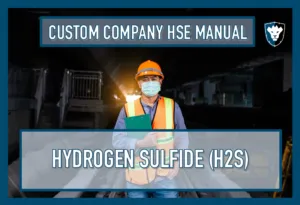
Ladder Safety
Policy/Program information: The purpose is to train employees about the guidelines for the safe use of ladders by employees, contractors and visitors. Ladders are used when employees need to move up or down between two different levels. Slips, trips, and falls are significant contributors to accidents. Slips, trips, and falls can occur when wrong ladder selection is made and when improper climbing techniques and/or defective ladders are used.
Required if: Ladder safety training shall be done upon initial employment and/or job assignment. Refresher training shall be provided to employees at the discretion of their supervisor. Employees using the ladders shall be trained in:
● The proper use of the ladders•
● What kind of ladder to use•
● How to set up ladders•
● Ladder inspection•
● Proper maintenance
Legislation: This safety policy and procedure is established in accordance with Occupational Safety and Health Standards for General Industry (29 CFR 1910.25-27) and Occupational Safety and Health Standards for the Construction Industry (29 CFR 1926.1053).
Compliant with: OSHA | ISNetworld® RAVS | Veriforce® | Avetta® | Complyworks® | Browz® | Rig Up®
Price: $200
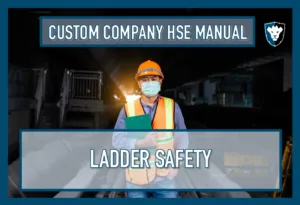
Lead Abatement and Awareness
Policy/Program information: Lead enters the body primarily through inhalation and ingestion. Today, adults are mainly exposed to lead by breathing in lead-containing dust and fumes at work, or from hobbies that involve lead. Lead passes through the lungs into the blood where it can harm many of the body’s organ systems. While inorganic lead does not readily enter the body through the skin, it can enter the body through accidental ingestion (eating, drinking, and smoking) via contaminated hands, clothing, and surfaces. Workers may develop a variety of ailments, such as neurological effects, gastrointestinal effects, anemia, and kidney disease. The lead standards establish a permissible exposure limit (PEL) of 50 μg/m3 of lead over an eight-hour time-weighted-average for all employees covered. The standards also set an action level of 30 μg/m3, at which an employer must begin specific compliance activities, including blood lead testing for exposed workers. The lead standards also include ancillary provisions such as medical surveillance, exposure monitoring, and hygiene facilities and practices that are critical in preventing lead exposure and elevated blood lead levels
Required if: Employers are required to protect workers from inorganic lead exposure under OSHA lead standards covering general industry (1910.1025), shipyards (1915.1025), and construction (1926.62). The lead standards establish a permissible exposure limit (PEL) of 50 μg/m3 of lead over an eight-hour time-weighted-average for all employees covered. The standards also set an action level of 30 μg/m3, at which an employer must begin specific compliance activities, including blood lead testing for exposed workers. The lead standards also include ancillary provisions such as medical surveillance, exposure monitoring, and hygiene facilities and practices that are critical in preventing lead exposure and elevated blood lead levels.
Legislation: General Industry (1910.1025), Shipyards (1915.1025), and Construction (1926.62)
Compliant with: OSHA | ISNetworld® RAVS | Veriforce® | Avetta® | Complyworks® | Browz® | Rig Up®
Price: $200

Lead Awareness
Policy/Program information: This topic you will be trained on the general awareness of lead, the risks, and the regulatory requirements for protecting employees who work with lead as required by OSHA. This training course is also applicable to the Shipyard Industry, as the requirements for shipyard employment under 29 CFR 1915.1025 are identical to those set forth in 29 CFR 1910.1025. Lead Awareness training must be taken annually per OSHA Regulations.
Required if: This training course focuses specifically on the OSHA Standard for General Industry, found in Subpart Z, Toxic and Hazardous Substances, in 29 CFR 1910.1025.
Legislation: 29 CFR 1910.1025.
Compliant with: OSHA | ISNetworld® RAVS | Veriforce® | Avetta® | Complyworks® | Browz® | Rig Up®
Price: $200
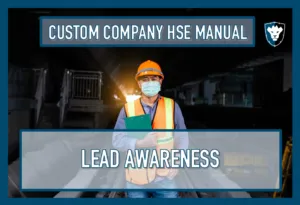
Lockout/Tagout (LOTO) Program
Policy/Program information: Ensure that employees who are planning, supervising or otherwise participating in operations which require implementing lockout procedures are properly trained; give training coordinators a company endorsed reference for creating internal training courses or outsourcing instruction.
Required if: Recommended within three months of initial hire and before the task begins: annually thereafter
Legislation: OSHA 29CFR, Part: 1910.147
Compliant with: OSHA | ISNetworld® RAVS | Veriforce® | Avetta® | Complyworks® | Browz® | Rig Up®
Price: $200
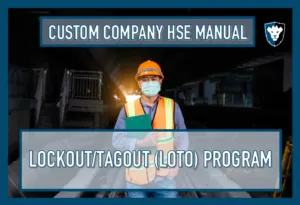
Manual Lifting
Policy/Program information: The purpose of the Basin Safety Manual Material Handling Program is to apply ergonomic principles and sound decision-making to the workplace in an effort to reduce the number of manual lifts thus decreasing workplace injuries and, where possible, increasing productivity, quality and efficiency. A proactive material handling approach focuses on making changes when risk factors have been identified, as well as incorporating automated material handling into the design phase of new facilities, equipment, tools and scheduling changes.
Required if: Examples of circumstances requiring retraining employees may be whenever there is:
● A change in employees’ job assignments
● A change in machines/equipment available
● New equipment or processes that may present a new hazard
Retraining should also occur whenever a periodic inspection reveals, or whenever the employer believes, that an employee is performing tasks covered under this program inadequately. The retraining should reestablish the employee’s proficiency in procedures and introduce new or revised procedures if necessary.
Legislation: https://www.osha.gov/laws-regs/regulations/standardnumber/1904
Compliant with: OSHA | ISNetworld® RAVS | Veriforce® | Avetta® | Complyworks® | Browz® | Rig Up®
Price: $200
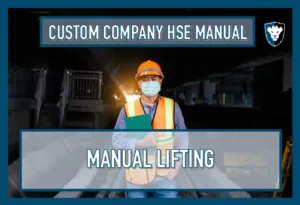
Noise Exposure/Hearing Conservation
Policy/Program information: To ensure that company standards for hearing conservation training meet all requirements as per federal legislation; give training coordinators a company endorsed reference for creating internal training courses or outsourcing instruction
Required if: OSHA requires employers to implement a hearing conservation program when noise exposure is at or above 85 decibels averaged over 8 working hours, or an 8-hour time-weighted average (TWA).
Legislation: OSHA 29CFR, Part: 1910.95
Compliant with: OSHA | ISNetworld® RAVS | Veriforce® | Avetta® | Complyworks® | Browz® | Rig Up®
Price: $200

Personal Protective Equipment (PPE)
Policy/Program information: To ensure the company provides each employee with the information, instruction, and training necessary to protect their health and safety at the workplace.
Required if: Required before commencement of task or within one month of employment; annually thereafter.
Legislation: OSHA 29CFR, Part: 1910.132
Compliant with: OSHA | ISNetworld® RAVS | Veriforce® | Avetta® | Complyworks® | Browz® | Rig Up®
Price: $200

Personal Protective Equipment
(PPE) H2S/Hazard Chemical Exposure Areas
Policy/Program information: Being Trained in the understanding of which safety controls are used in an H2S environment. There are several types of PPE that can be used to protect workers from harmful hydrogen sulfide (H2S) exposure. Exactly what kind is necessary will depend on the conditions of each work site, including how much H2S gas is present and at what levels. The first line of defense should involve a qualified professional conducting a thorough assessment with testing monitors to determine how much of the H2S can be eliminated at the source. Following that, occupational health and safety best practices suggest that the employer implement and maintain control exposures with personal protective equipment (PPE) and safe work practices to reduce exposures (learn more about using the right equipment in Avoiding Injury: Reasons for Using the Correct Safety Equipment).
Required if: In a area where H2S or other toxic gases may be present or in areas that are at the company’s action level
Legislation: OSHA mandates what PPE is required when workers are either directly exposed to H2S or working near a site where the gas is present. Whenever respirators are used, the employer must have a respiratory protection program that meets the requirements of OSHA’s Respiratory Protection standard (29 CFR 1910.134). This program must include proper respirator selection, fit testing, medical evaluations, and training
Compliant with: OSHA | ISNetworld® RAVS | Veriforce® | Avetta® | Complyworks® | Browz® | Rig Up®
Price: $200
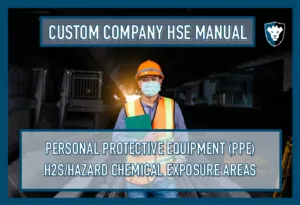
Process Safety Management
Policy/Program information: Unexpected releases of toxic, reactive, or flammable liquids and gases in processes involving highly hazardous chemicals have been reported for many years, in various industries using chemicals with such properties. Regardless of the industry that uses these highly hazardous chemicals, there is a potential for an accidental release any time they are not properly controlled, creating the possibility of disaster.
Required if: Process safety management increases safety for the workforce. Now, small businesses with limited resources might use other ways to decrease the risks associated with hazardous chemicals in the workplace, but the development of a process safety management program is the operating standard.
Legislation: 29 CFR 1910.119
Compliant with: OSHA | ISNetworld® RAVS | Veriforce® | Avetta® | Complyworks® | Browz® | Rig Up®
Price: $200

Respiratory Protection
Policy/Program information: Millions of workers are required to wear respirators in various workplaces throughout the United States. Respirators protect workers against insufficient oxygen environments, harmful dusts, fogs, smokes, mists, gases, vapors, and sprays. These hazards may cause cancer, lung impairment, diseases, or death. Compliance with the OSHA Respiratory Protection Standard could avert hundreds of deaths and thousands of illnesses annually. Respirators protect the user in two basic ways. The first is by the removal of contaminants from the air. Respirators of this type include particulate respirators, which filter out airborne particles, and air-purifying respirators with cartridges/canisters which filter out chemicals and gases. Other respirators protect by supplying clean respirable air from another source. Respirators that fall into this category include airline respirators, which use compressed air from a remote source, and self-contained breathing apparatus (SCBA), which include their own air supply. This class is to ensure that company standards for respiratory protection and fit testing training meet all requirements as per federal legislation.
Required if: Recommended within one month of initial hire; annually thereafter
Legislation: OSHA 29CFR, Part: 1910.134
Compliant with: OSHA | ISNetworld® RAVS | Veriforce® | Avetta® | Complyworks® | Browz® | Rig Up®
Price: $200
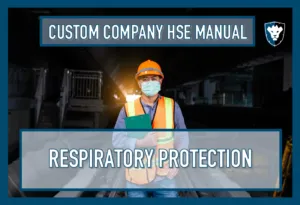
Rigging Material Handling
Policy/Program information: Rigging involves lifting heavy items with cranes and other construction equipment, often at high elevations. Dozens of workers lose their lives in rigging-related accidents each year, most frequently when loads slip from the rigging setup, rigging equipment fails, and when electrical lines pose hazards.These are some of the many rigging and material handling topics that you’ll learn about in our Rigging and Material Handling online course:
● Stacking
● Storing
● Lifting
● Rigging practices
● Rigging equipment
● Safe working loads
● Rigging inspections
After taking this course, you’ll be prepared to properly inspect rigging equipment before use, load rigging equipment safely, maintain useful rigging records, and establish effective signaling procedures. Not only do improved materials handling procedures help keep employees safe, but they also result in higher quality products, fewer product defects, and improved overall sales.
Required if: If your company is involved with transporting heavy materials, forklifts, vehicle lifts, and stable rigging configurations.
Legislation: https://www.osha.gov/laws-regs/interlinking/standards/1926.251/ OSHA Safety and Health Regulations for Construction, Subpart H, Rigging equipment for material handling, Part 1910.184(a) -184(d)
Compliant with: OSHA | ISNetworld® RAVS | Veriforce® | Avetta® | Complyworks® | Browz® | Rig Up®
Price: $200
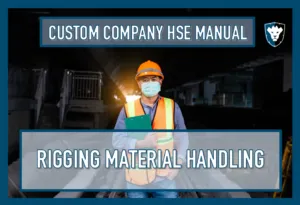
Risk Assessment (Identification of Hazards)
Policy/Program information: Learning how to assess a situation and determine Risk” is the product of hazard and exposure. Thus, risk can be reduced by controlling or eliminating the hazard or by reducing workers’ exposure to hazards. An assessment of risk helps employers understand hazards in the context of their own workplace and prioritize hazards.
To identify and assess hazards, employers and workers:
Collect and review information about the hazards present or likely to be present in the workplace.
Conduct initial and periodic workplace inspections of the workplace to identify new or recurring hazards.
Investigate injuries, illnesses, incidents, and close calls/near misses to determine the underlying hazards, their causes, and safety and health program shortcomings.
Group similar incidents and identify trends in injuries, illnesses, and hazards reported.
Consider hazards associated with emergency or non routine situations.
Determine the severity and likelihood of incidents that could result for each hazard identified, and use this information to prioritize corrective actions.
Required if: Hazard Identification and Assessment One of the “root causes” of workplace injuries, illnesses, and incidents is the failure to identify or recognize hazards that are present, or that could have been anticipated. A critical element of any effective safety and health program is a proactive, ongoing process to identify and assess such hazards.
Legislation: https://www.osha.gov/shpguidelines/hazard-Identification.html
Compliant with: OSHA | ISNetworld® RAVS | Veriforce® | Avetta® | Complyworks® | Browz® | Rig Up®
Price: $200
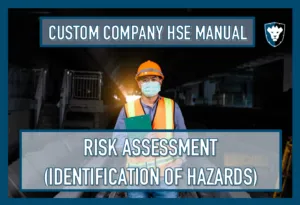
Scaffolds
Policy/Program information: A comprehensive one-day training class covering the five most serious scaffold hazards: Falls, Unsafe Access, Falling Objects, Electrocution and Collapses. For supervisors, foreman and employees who erect scaffolds and oversee scaffold erection.
Required if: Scaffold users are those whose work requires them, at least some of the time, to be supported by scaffolding to access the area of a structure where that work is performed.
Legislation: General Industry 29 CFR 1910https://www.osha.gov/laws-regs/regulations/standardnumber/1910#1910_Subpart_B
Compliant with: OSHA | ISNetworld® RAVS | Veriforce® | Avetta® | Complyworks® | Browz® | Rig Up®
Price: $200
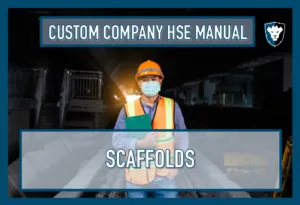
Short Service Employees (SSE)
Policy/Program information: An initial employee orientation is required before performing work on locations. Orientation must be conducted by the person-in-charge and shall include the following as a minimums:
● Management Safety Commitment
● General Safety Rules (and obtain signature)
● General requirements for personal protective equipment
● Injury reporting and medical follow-up procedures
● Review regulatory and job skills training specific to immediate job tasks
● Required participation in safety meetings and pre-job and JSA process
● Site-specific orientation presented by Company Representative. Minimum site specific orientation shall include operations overview, emergency action plan, facility sign-in and sign-out, hazard identification and reporting, MSDS information, H2S if applicable, etc.
Short Service Employees (SSE’s) shall be kept to a minimum on a work location at any given time.
Required if: Applies to employees with less than six months service
Compliant with: OSHA | ISNetworld® RAVS | Veriforce® | Avetta® | Complyworks® | Browz® | Rig Up®
Price: $200
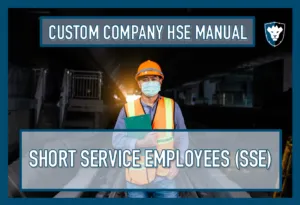
Spill Prevention & Response
Policy/Program information: OSHA regulates the equipment used for the prevention and containment of spills. The equipment can be divided into two categories: equipment used to respond to the spill and PPE. The equipment used to respond to a spill includes traditional and proven methods such as diking and ditching or the use of diatomaceous earth. OSHA recognizes, however, that new and more effective products, like oil solidifying polymers, can play an important role in our response efforts.
Required if: Hazardous waste spills can occur in many different work environments, including construction sites, manufacturing facilities, oil fields and power plants. They are often caused by drilling or mining operations and may also result from demolition or excavation activities. Wastewater treatment plants are common spots for hazardous spills, particularly when equipment malfunctions. OSHA hazardous waste regulations also apply during storage or disposal or barrels or other containers of waste materials. Even a leak or hole in one of these containers is classified as a spill and requires immediate attention.
Legislation: OSHA Standard 1910.120- https://www.osha.gov/laws-regs/interlinking/standards/1910.120%20App%20C
Compliant with: OSHA | ISNetworld® RAVS | Veriforce® | Avetta® | Complyworks® | Browz® | Rig Up®
Price: $200
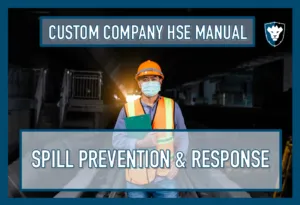
Trenching, Shoring, & Excavation
Policy/Program information: Ensure that employees who are participating in trenching or excavating operations are properly trained and are following safety precautions and procedures when operating mechanical equipment for excavation, drilling boring, or any other work activities below grade that run the risk of personal injury and/or property damage
Required if: Required before commencement of excavation work or within one year of initial hire; every three years thereafter.
Legislation: OSHA 29CFR, Part: 1926.651
Compliant with: OSHA | ISNetworld® RAVS | Veriforce® | Avetta® | Complyworks® | Browz® | Rig Up®
Price: $200

Waste Management
Policy/Program information: An unexpected release of hazardous substances, or a substantial threat of a hazardous substance release, can pose a significant health and safety risk to workers.Unexpected releases can be caused by operation failures and unrelated outside events (e.g., natural disasters, terrorism). Workers can encounter hazardous substances through waste dumped in the environment—a serious safety and health issue that continues to endanger life and environmental quality. Employers must adequately prepare emergency response and cleanup workers to clearly understand their role(s) in managing unexpected releases of hazardous substances, so that they can act quickly and respond in a safe manner during an emergency.
Required if: The HAZWOPER standard covers employers performing the following general categories of work operations:Hazardous waste site cleanup operations [paragraphs (b) – (o)];Operations involving hazardous waste that are conducted at treatment, storage, and disposal (TSD) facilities [paragraph (p)]; andEmergency response operations involving hazardous substance releases [paragraph (q)].The HAZWOPER standard provides employers, emergency response workers, and other workers potentially exposed to hazardous substances information and training criteria to improve workplace safety and health and reduce workplace injuries and illnesses that could occur from exposures to hazardous substances. It is critical that employers and their workers understand the scope and application of HAZWOPER, and can determine which sections apply to their specific work operations
Legislation: The HAZWOPER standard for the construction industry (29 CFR 1926.65) is identical to 29 CFR 1910.120. For brevity, the HAZWOPER standard is referenced as 29 CFR 1910.120
Compliant with: OSHA | ISNetworld® RAVS | Veriforce® | Avetta® | Complyworks® | Browz® | Rig Up®
Price: $200
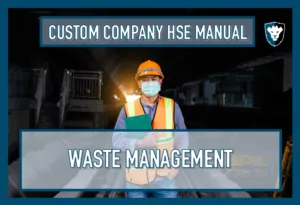
ADMINISTRATIVE PROGRAMS
Access to Employee Medical and Exposure Records
Policy/Program information: If you are an employee who may have been exposed to toxic substances or harmful physical agents in the workplace, OSHA’s regulation may help you detect, prevent, and treat occupational disease. You have the right to access relevant exposure and medical records and to know how OSHA’s standard covers you if you are any of the following:
■ A current or former employee who is or may have been exposed to toxic substances or harmful physical agents.
■ An employee who was assigned or transferred to work involving toxic substances or harmful physical agents.
■ The legal representative of a deceased or legally incapacitated employee who was or may have been exposed to toxic substances or harmful physical agents.
Required if: You may access any employee exposure records that show the measuring or monitoring of your own exposure to a toxic substance or harmful physical agent. If your employer does not have any records that specifically chart your own exposure levels, you may access the exposure records of employees who engage in similar work or working conditions and may have experienced exposures similar to yours.
Legislation: [Title 29 of the Code of Federal Regulations (CFR) Part 1910.1020]
Compliant with: OSHA | ISNetworld® RAVS | Veriforce® | Avetta® | Complyworks® | Browz® | Rig Up®
Price: $200
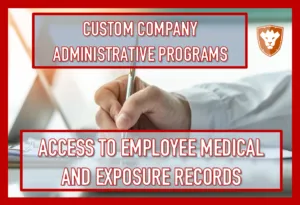
Behavior-Based Safety
Policy/Program information: The best way to prevent an incident from repeating itself is to utilize behavior-based safety (BBS), which examines the overall safety of your workplace. Its aim is to focus attention on the daily behaviors of the workers. BBS works to determine the root causes of unsafe behaviors and the best route to improve them.Behavior-based safety acknowledges that employees often work in less-than-perfect conditions and will be forced to make choices between working safely or taking unsafe shortcuts. To combat this, BBS looks at the interaction between three major variables in the workplace: the person, the work environment and the behavior.
“Person” represents the general experience and the physical capabilities of employees
“Work environment” is the controls, workplace and general company culture
“Behavior” is how employees interact with their workplace and how they act while doing their duties
Required if: BBS “focuses on what people do, analyzes why they do it, and then applies a research-supported intervention strategy to improve what people do”. At its very core BBS is based on a larger scientific field called organizational behavior management.
Legislation: Successful implementation of Behaviour Based Safety requires a top-down management approach. The company’s policy must not only reflect the importance of BBS but also the commitment of the management. BBS must be fully integrated in the carrier’s organisation and management systems. It needs to become an integral part of the company’s culture and be one of the key drivers for continuous performance improvement through the implementation of key performance indicators.
Compliant with: OSHA | ISNetworld® RAVS | Veriforce® | Avetta® | Complyworks® | Browz® | Rig Up®
Price: $200
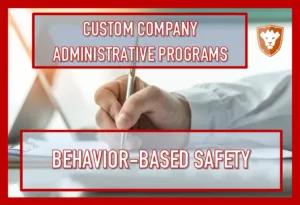
Incident Investigations
Policy/Program information: OSHA strongly encourages employers to investigate all incidents in which a worker was hurt, as well as close calls (sometimes called “near misses”), in which a worker might have been hurt if the circumstances had been slightly different. In the past, the term “accident” was often used when referring to an unplanned, unwanted event. To many, “accident” suggests an event that was random, and could not have been prevented. Since nearly all worksite fatalities, injuries, and illnesses are preventable, OSHA suggests using the term “incident” investigation.
Investigating a worksite incident- a fatality, injury, illness, or close call- provides employers and workers the opportunity to identify hazards in their operations and shortcomings in their safety and health programs. Most importantly, it enables employers and workers to identify and implement the corrective actions necessary to prevent future incidents.
Incident investigations that focus on identifying and correcting root causes, not on finding fault or blame, also improve workplace morale and increase productivity, by demonstrating an employer’s commitment to a safe and healthful workplace.
Incident investigations are often conducted by a supervisor, but to be most effective, these investigations should include managers and employees working together, since each bring different knowledge, understanding and perspectives to the investigation.
In conducting an incident investigation, the team must look beyond the immediate causes of an incident. It is far too easy, and often misleading, to conclude that carelessness or failure to follow a procedure alone was the cause of an incident. To do so fails to discover the underlying or root causes of the incident, and therefore fails to identify the systemic changes and measures needed to prevent future incidents. When a shortcoming is identified, it is important to ask why it existed and why it was not previously addressed.
Required if: Required every five years for train-the-trainers (external)
Legislation: Internal Policies
Compliant with: OSHA | ISNetworld® RAVS | Veriforce® | Avetta® | Complyworks® | Browz® | Rig Up®
Price: $200

Job Competency Program
Policy/Program information: OSHA believes training is essential to every employer’s safety and health program for protecting workers from injuries and illnesses. New employees have a higher rate of accidents and injuries than more experienced workers, and it is important to ensure workers are competent to perform the job they are assigned.
Required if: New employee, reviews, job transfer
Legislation: A Job Competency policy starts with a public organizational chart of minimum educational and experience requirements for company jobs, includes the documentation of proof employees are qualified to perform their job duties and job specific training for new and transferred employees and regular training on everyday tasks.
Compliant with: OSHA | ISNetworld® RAVS | Veriforce® | Avetta® | Complyworks® | Browz® | Rig Up®
Price: $200
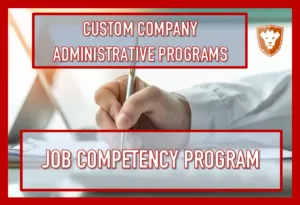
HR POLICIES
Disciplinary Program
Policy/Program information: The disciplinary system does not exist primarily to punish employees. Its purpose should be to control the work environment so that workers are protected and accidents are prevented. A disciplinary system helps ensure workplace safety and health by letting the Company’s employees know what is expected of them. It provides workers with opportunities to correct their behavior before an accident happens.
A disciplinary system is one of the keys to successfully implementing the Company’s safety and health program. It ensures that the Company’s rules and safe working practices are taken seriously by employees and are actually followed. It lets employees know how the Company expects them to operate in relation to the goals of the Company’s safety and health program. And it lays out the actions the Company will take if individuals do not meet the Company’s expectations. The employee’s supervisor and all members of management are responsible for the enforcement of this disciplinary program.
A disciplinary system cannot work in a vacuum. Before the Company can hold employees accountable for their actions, the Company first needs to establish its safety and health policy and disciplinary rules.
Required if: Employees need to know the Company’s position on safety and health and what the Company expects of them. They need a clear understanding of the rules and the consequences of breaking those rules. This is true in all areas of work, but it is especially important for worker safety and health. As part of the policy statement, and in the employee safety handbook, the Company has a written statement setting forth the Company’s disciplinary policy. Company managers and supervisors will always be on the lookout for safety violations and will conscientiously and vigorously enforce the Company’s commitment to safety.
Compliant with: OSHA | ISNetworld® RAVS | Veriforce® | Avetta® | Complyworks® | Browz® | Rig Up®
Price: $200
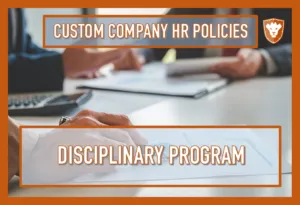
Drug & Alcohol Programs
Policy/Program information: Alcohol and drug abuse poses a threat to the health and safety of company employees and to the security of the company’s equipment and facilities. For these reasons, company’s are committed to the elimination of drug and alcohol use and abuse in the workplace.
Required if:
Legislation: Drug-Free Workplace Act of 1988
Compliant with: OSHA | ISNetworld® RAVS | Veriforce® | Avetta® | Complyworks® | Browz® | Rig Up®
Price: $200
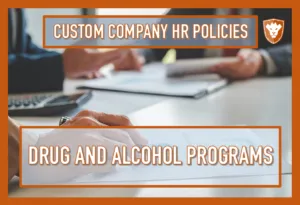
Driver Programs
Policy/Program information:
Required if:
Legislation:
Compliant with: OSHA | ISNetworld® RAVS | Veriforce® | Avetta® | Complyworks® | Browz® | Rig Up®
Price: $200
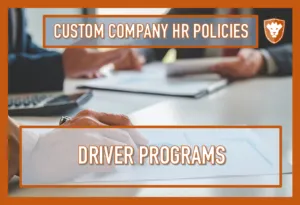
PPE Return Policies
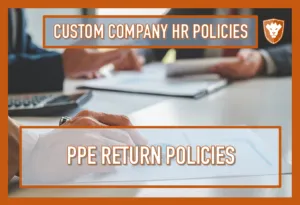
Employee Review Forms
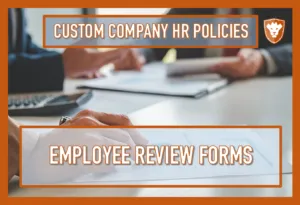
SAFETY FORMS / PERMITS
All forms can be created electronically
Job Safety Analysis
A job hazard analysis is a technique that focuses on job tasks as a way to identify hazards before they occur. It focuses on the relationship between the worker, the task, the tools, and the work environment. Ideally, after you identify uncontrolled hazards, you will take steps to eliminate or reduce them to an acceptable risk level
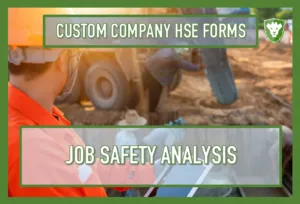
Safe Work Permit
A safe work permit (also known as a “permit to work”) is a document that includes a description of the work to be performed, the hazards involved, the precautions to take, the required authorizations, and other elements. It is a written record authorizing a specific work at a specific location, and for a specific time. It’s important to note that a safe work permit does not reduce risks of incidents by itself. Rather, it specifies the hazards and the risk control measures that workers must be aware of before they start work. A safe system of work permit is an effective vehicle for communicating critical safety information.
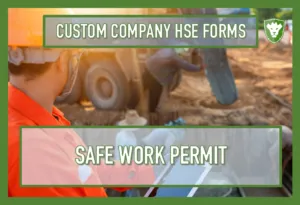
Lockout / Tagout Permit
A Lockout/ Tagout (LOTO) Permits are a key element of LOTO programs helping to insure equipment maintenance operations are completed safely. Implementation of a safe work permit system can help reduce the risk of serious injuries or death caused by accidental operation of equipment.The permit also suggests the necessary measures to be equipped with before de-energising the equipment and ensure the safety of the person performing Lockout and Tagout task.
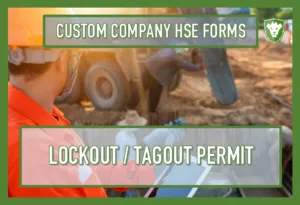
Confined Space Entry Permit
A The Confined Space Entry Permit is the major tool in assuring safety during entry into confined spaces with known hazards or with unknown or potentially hazardous atmospheres. The entry permit process guides the supervisor and workers through a systematic evaluation of the space to be entered. The permit should be used to establish appropriate conditions. Before each entry into a confined space, an entry permit will be completed by a qualified person and the contents communicated to all employees involved in the operation and conspicuously posted near the work location. In addition, all personnel involved with the confined space entry must be given a briefing before operations commence

Hot Work Permit
A Hot work is any work that involves burning, welding, cutting, brazing, soldering, grinding, using fire- or spark-producing tools, or other work that produces a source of ignition. Welding and cutting operations are common to drilling and servicing operations.Require hot work permits in areas where hazardous materials are stored and cannot be removed, or in areas where flammable atmospheres could exist. It is important for the employer to have a hot work program that covers hot work requirements, including permits
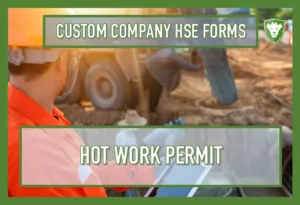
Job Competency Forms
Competency assessment is the process used to identify an employee’s suitability for a given role. It helps measure an employee’s skills, knowledge, and performance against pre-defined benchmarks and job requirements
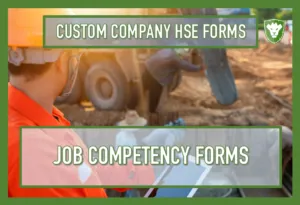
Project Trackers
We provide real-time project tracking through our proprietary application that keeps up-to-date:
Progress Data
Cost Tracking
Quality Control Data
Safety Inspections
Behavior Based Safety Data
Field Tickets
Change-Orders
Personnel Hours
Fuel Usage
Increase the productivity of your workforce and keep your customers up-to-date with our project tracker software.
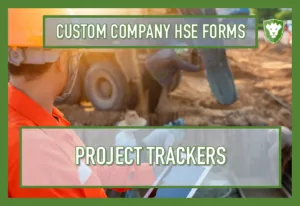
Incident Report Forms
Our incident report forms contain all the necessary information and root cause analysis data for your initial incident report for your customer. It allows for photos, GPS locational input, witness statements electronically or manual upload for paper copies, incident breakdown, timelines, and other document uploads. Increase the speed of data collection and sharing, and improve your overall incident reporting process with our customizable incident reporting form.
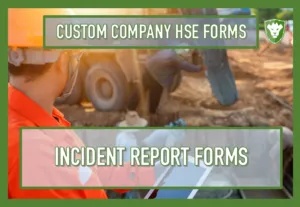
Field Tickets
We provide electronic field ticketing software that increases your cash flow and the speed in which your customers are invoiced. We incorporate your prices by customer, various billing units (miles, hours, etc.) and can incorporate customer stamps into the form, simplifying the approval process. Each submission provides an electronic copy (excel or PDF) and a data-base copy for quick retrieval. Ensure that all of your services are invoiced, everyday, and increase your productivity.

Pre/Post Trip Forms
DOT compliance can be a nuisance. One of the main challenges is providing a simple documentation process for your DOT drivers. We provide an excellent, user-friendly DOT pre/post trip form that tracks maintenance requirements, mileage, fluid levels, and other customizable items such as tools, paperwork (insurance, TERO, etc) and fuel cards. Each form takes about 10-30 seconds to complete, increasing your driver’s productivity and the time spent on compliance.

Equipment Inspections
Our equipment inspection forms are extremely versatile and user friendly. They are customizable to your needs and range from basic to advanced, depending on the type of work the equipment is used for. We provide inspection checklists for:
Loaders / Backhoes
Dozers
Aerial Lifts
Forklifts
Skidsteers
Telehandlers
Excavators
Cranes
Each form is sent electronically (PDF / excel) and is stored in a database for easy retrieval. It can also log equipment hours and track maintenance for simple scheduling.
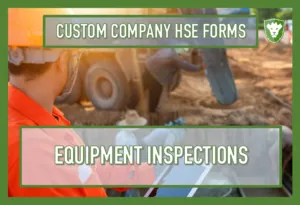
Facility Inspection Forms
Our facility inspection report forms encompass all OSHA and Industry best practice items with an integrated scoring system. Each form is sent electronically, making data capture instant and correction data trendable. It can be quickly customized to fit your exact facility and operations areas.
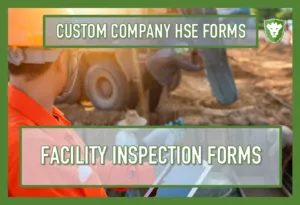
Training Rosters
We make tracking your training simple. Our rosters can instantly share employee information and credentials to various softwares including; google, HR softwares, APIs or spreadsheets, limiting data input requirements. With this information, we can create expiration action items, making scheduling future trainings easy and automated.
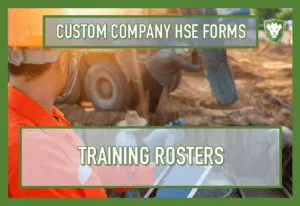
Workover / Drilling / Surface Rig Inspection Forms
Our rig inspection forms incorporate all OSHA / ANSI / API and industry best practice requirements. They are customizable and exhaustive and incorporate a scoring system and the ability to upload images and videos, making correction tracking simple and easy to share with mechanics and rig managers.
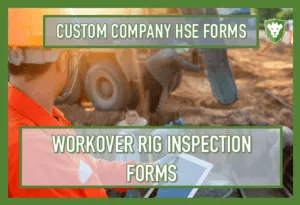
Spill Response Forms
Our spill response forms incorporate EPA / DEQ / BLM requirements. Our required fields ensure that no data is missed. We have calculation fields that verify contamination areas and have the ability to upload images and videos, remediation activities, GPS locating and backfill materials.
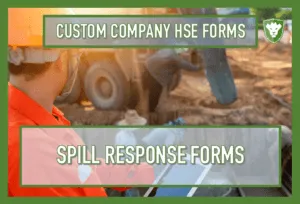
AVO Inspection Forms
Our AVO forms are designed to keep operators compliant with ever-changing environmental regulations. They are extremely customizable and can track failures, maintenance needs, inspections, gas analysis, and any other data your company would like to collect
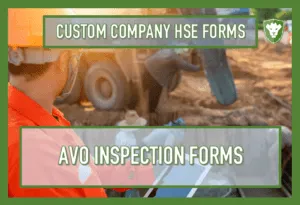
SPCC Inspection Forms
Originally published in 1973 under the authority of §311 of the Clean Water Act, the Oil Pollution Prevention regulation sets forth requirements for:
● the prevention of,
● preparedness for, and
● response to oil discharges at specific non- transportation-related facilities.
The goal of this regulation is to prevent oil from reaching navigable waters and adjoining shorelines, and to contain discharges of oil. The regulation requires these facilities to develop and implement Spill Prevention, Control, and Countermeasure (SPCC) Plans and establishes procedures, methods, and equipment requirements (Subparts A, B, and C

DROPS Checklists
DROPS programs can be extremely complicated, tracking the paperwork and data so it is usable can be even moreso. Our DROPS inspection form makes this process seamless, compliant, and provides relevant data and scorecards automatically.
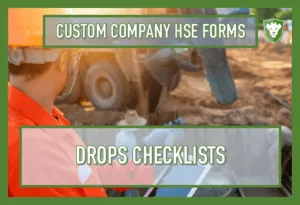
Rental Forms
Our rental forms can be digitally tracked using GPS coordinates, and auto-remove items from your rental inventory. They were designed to enhance the speed and delivery of your rental capabilities.
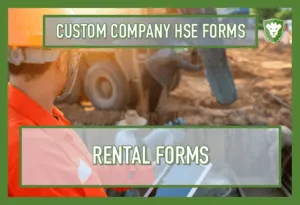
Change Order Forms
Our Basin’s change-order forms simplify the change-order process. We integrate video capabilities so explanation time is minimized. Your customers demand accountability, and we make this simple and easy to accomplish.
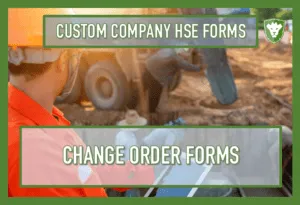
FLEET MANAGEMENT AND DOT FORMS
Pre-Trip & Post-Trip Forms
Basin’s pre-trip forms cover all required items prior to departure. It can track corrections, share mileage and maintenance logs, and includes post-trip data so compliance has never been easier. They have the ability to upload images and videos, so sharing corrections with your mechanics is simple and streamlined
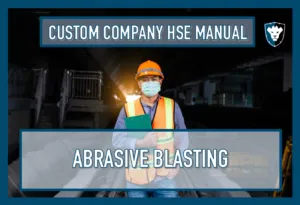
Accident / Incident Report Forms
Our accident / incident report forms are customizable to your specific needs and required fields ensure that all relevant data is captured. It includes information on case management, medical care, responsible persons for follow-up, and the ability to upload images and videos, ensuring timely reporting and clear root cause analysis data.
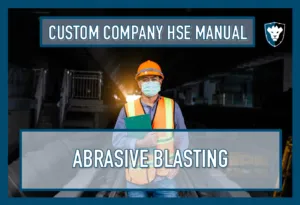
Background Check Forms
We make checking your employee’s history simple. Our electronic form allows data to be auto-share with your background check company of choice, and be stored permanently on your server. The form takes about 10 minutes to complete, and can be sent securely to your prospect employees over email, speeding up the on-boarding process and save time and money.
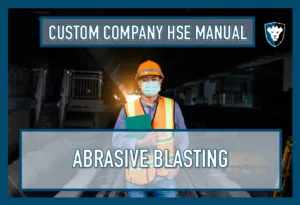
Driver Qualification Forms
Our electronic DQ files simplify DOT compliance. We ensure that all necessary data is captured and required fields are complete, so that concern about correct or complete data is never an issue again. You can’t manage what you can’t measure, let us help simplify your DOT management program

LINK LIST
Training
Consulting
Field Services
Partnerships
Compliance
Resources
VISIT US
4401 16th Avenue West Williston, ND 58801.
2740 Sims Street Suite B Dickinson , ND 58601
(701) 572-8140

BASIN SAFETY CONSULTING CORPORATION
Basin Safety believes in shared excellence. We are accountable to our core values:
● Pioneering Excellence Everyday
● Supporting each other to put customers first
● Asking the right questions, to ensure the greatest results.

BASIN SAFETY CONSULTING CORPORATION
Basin Safety believes in shared excellence. We are accountable to our core values:
● Pioneering Excellence Everyday
● Supporting each other to put customers first
● Asking the right questions, to ensure the greatest results.
VISIT US
4401 16th Avenue West Williston, ND 58801.
2740 Sims Street Suite B Dickinson , ND 58601
(701) 503-4853
LINK LIST
Training
Consulting
Field Services
Partnerships
Compliance
Resources